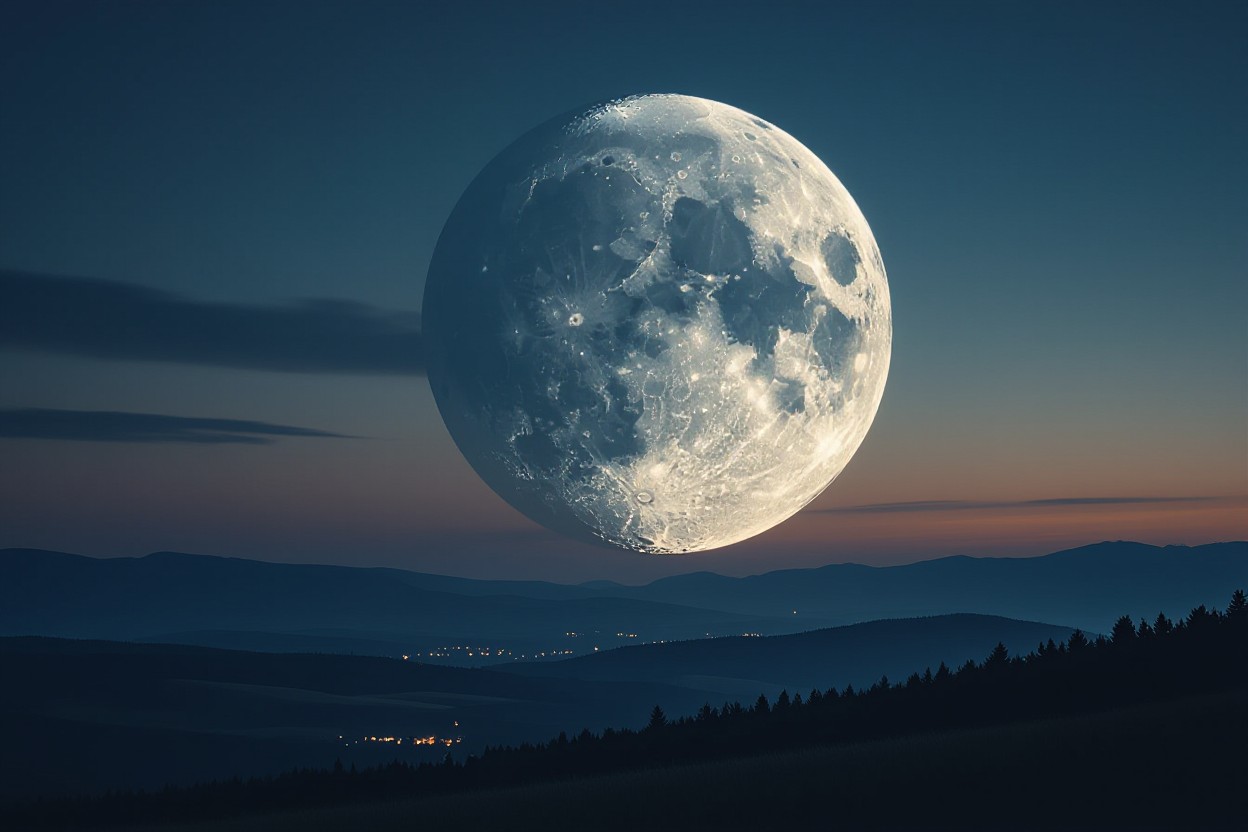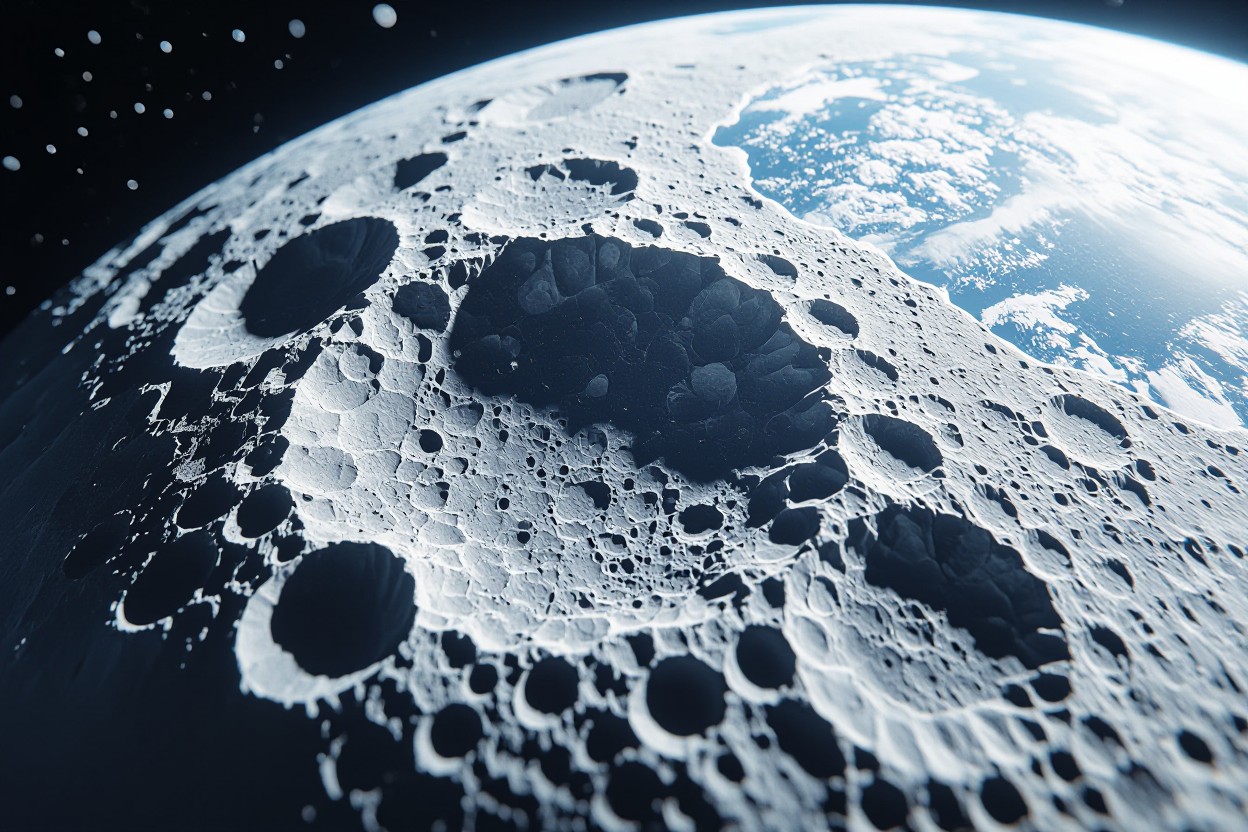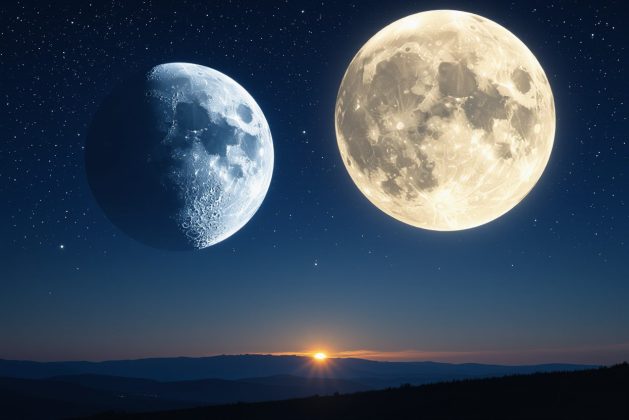Lunar phases captivate our gaze, yet their changing shapes can mystify you. As I probe into this cosmic dance, I’ll reveal that the Moon itself does not change shape; instead, you see varying portions of its sunlit surface shining back at Earth. This phenomenon hinges on our position relative to the Moon and Sun, a brilliant example of celestial mechanics. Grasping this interplay not only enriches your view of the night sky but also dispels common misconceptions that could lead you to fear or misunderstand the Moon’s phases. Together, let’s illuminate this celestial rhythm in a way that is both scientific and poetic.

The Celestial Mechanics of Lunar Phases
Examining the lunar phases requires understanding the dynamic relationship between the Moon, Earth, and Sun. The Moon’s apparent shape changes because of the varying angles of sunlight reflection as the Moon orbits Earth. This cosmic choreography creates the cycle of phases, from new Moon to full Moon and back, each lasting approximately 29.5 days. The interplay of these celestial bodies governs the illumination we observe, dictating when and how much of the lunar surface is visible to you.
The Moon’s Orbit: A Dance with Earth
The Moon completes an elliptical orbit around Earth every 27.3 days, but the lunar phases cycle spans roughly 29.5 days due to the simultaneous movement of Earth around the Sun. Its orbit is slightly tilted at about 5 degrees relative to Earth’s orbital plane, preventing eclipses every month. This orbital geometry means the Moon’s position relative to the Sun and Earth continuously shifts, exposing varying portions of its sunlit surface to your view.
The Role of Sunlight in Lunar Illumination
Sunlight striking the Moon is the source of its brightness, but only the Sun-lit hemisphere facing Earth is visible. As the Moon orbits, the angle at which sunlight hits its surface changes, creating the wax and wane of crescent, gibbous, and full phases. Lunar phases reflect the proportion of the Moon’s disk illuminated by the Sun that is visible from Earth at any moment.
Diving deeper, the Moon’s surface is covered in regolith, a layer of dusty rock that scatters the sunlight in complex ways. While the Sun illuminates half of the Moon at any time, features such as craters affect how light reflects, causing subtle variations in brightness and texture visible through telescopes. Additionally, the interplay of shadows and light on uneven terrain accentuates the perception of phases, helping astronomers pinpoint exact phase timings and surface details with impressive precision.

The Science of Perception: Why We See Different Shapes
Our visual system interprets the Moon’s appearance through a combination of light reflection, shadow play, and relative positioning. As sunlight illuminates only one side of the Moon, the varying angles cause the crescent, gibbous, or full phases we observe. Interestingly, the human brain fills gaps and adapts to changes in brightness or contrast, making these shapes feel distinct and dynamic. You see the Moon’s changing forms not only due to physical light shifts but also because your eyes and brain continuously process subtle transitions, emphasizing edges and shadows to enhance the illusion of transformation.
The Psychology of Light and Shadow
Our perception of the lunar phases hinges on the interplay of light and shadow, framed by how your brain deciphers contrast. The edges between the Moon’s illuminated and dark portions create strong visual cues, triggering your brain to categorize and label shapes quickly. This segmentation enhances the distinctiveness of phases like the sharp crescents and the rounded full Moon. The mind necessaryly performs a reality check each time it detects these light patterns, amplifying the sense of a shape changing over time even though the Moon itself remains a constant sphere.
Atmospheric Effects and Their Visual Impact
The Earth’s atmosphere introduces complexity by refracting and diffusing moonlight, altering the Moon’s perceived color, size, and clarity. Near the horizon, atmospheric particles scatter short wavelengths, tinting the Moon reddish or orange, while its apparent size seems magnified—an effect called the “Moon illusion.” These variations confuse your perception of shape and brightness, making phases appear softer or more contrasted than they truly are.
Atmospheric behavior significantly influences your lunar observations. Turbulence causes the Moon to shimmer or blur, especially when low in the sky, while pollutants and moisture can dim or discolor its glow. For example, during a total lunar eclipse, Earth’s atmosphere bends sunlight, casting a coppery tint on the Moon—an atmospheric fingerprint visibly altering your perception. These effects demonstrate how your direct view is filtered through layers of gases and particles, complicating the ostensibly simple shapes you imagine the Moon to have.
Cultural Interpretations of Lunar Changes
Across civilizations, the moon’s changing visage has served as a canvas for meaning and symbolism. The waxing and waning phases have inspired creation myths, omens, and divine associations. I find it fascinating how these lunar shifts not only captivated ancient societies but also became embedded in religious rites, agricultural practices, and storytelling. Your understanding of lunar cycles thus connects deeply with a vast human heritage, where each lunar shape held layered significance beyond mere astronomy.
Folklore and Mythology Surrounding the Moon
Lunar phases often embody myths reflecting life, death, rebirth, and cosmic balance. For example, in many Native American tales, the moon is seen as a guardian spirit influencing fertility and destiny. Similarly, the ancient Greeks personified Selene as a lunar goddess whose radiant journey across the night sky mirrored human emotions and cycles. These stories reveal how cultures interpret the moon’s rhythm as a metaphor for natural and spiritual transformation, weaving science and superstition into a single narrative fabric.
The Moon’s Influence on Calendars and Festivals
The moon’s cycle forms the backbone of numerous calendars worldwide, linking timekeeping to the lunar phases. The Islamic Hijri calendar, for instance, consists of 12 lunar months totaling about 354 days, which causes festivals like Ramadan to shift each solar year. Traditional East Asian calendars also rely on precise lunar calculations to determine occasions such as the Mid-Autumn Festival, celebrating the full moon’s bounty. These lunar-based temporal frameworks illustrate humanity’s intimate reliance on the moon’s changing shape.
Diving deeper, the synchronization between lunar phases and cultural events underscores how societies harness natural phenomena to structure rituals and agricultural cycles. The Jewish calendar, being luni-solar, adjusts lunar months with solar years to ensure that festivals like Passover align with spring. Ancient Egyptians timed planting and harvesting around lunar intervals, perceiving moonlight as a guide. Your modern temporal experiences thus echo these ancient attempts to harmonize life with lunar rhythms, revealing the moon as both a celestial clock and a symbolic anchor.
The Modern Edge: Lunar Phases in Technology and Exploration
The phases of the Moon have extended their influence far beyond folklore and calendars, deeply embedded now in the strategies of space technology and exploration. Understanding its cyclical illumination is imperative for optimizing satellite launches, timing surface operations, and managing communication arrays. As we push boundaries in space science, the Moon’s predictable dance between light and shadow offers a steady rhythm impacting everything from environmental monitoring to navigation. Its phases, once a celestial clock for ancient civilizations, now calibrate our most advanced missions, ensuring precision and efficiency in the unforgiving environment of space.
Impact on Space Missions and Astronomy
Space agencies meticulously schedule missions around lunar phases to minimize risks and maximize scientific returns. For instance, rocket launches often avoid full moons to reduce illumination issues that can interfere with ground-based telescopes. Lunar phases affect thermal conditions on the Moon’s surface, influencing rover operations since extreme temperature shifts during new and full moons can threaten equipment integrity. Astronomical observations also rely on moonlight levels; darker phases allow deeper views into the cosmos, while brighter phases illuminate lunar geology, aiding in understanding its formation and composition.
The Moon’s Role in Future Exploration Initiatives
The Moon serves as a stepping stone for ambitious plans, such as establishing a permanent lunar base or launching missions to Mars. Its phases dictate solar power availability for lunar habitats, impacting energy storage and consumption strategies. Future explorers will harness these natural cycles to optimize resource extraction, construction, and scientific experiments. By syncing operations with lunar illumination, missions can conserve energy and extend operational windows, transforming the Moon from a remote satellite into a pivotal hub for human expansion into the solar system.
Expanding on this, the Moon’s phases directly inform the scheduling of extravehicular activities to align with periods of optimal sunlight, ensuring safety and efficiency for astronauts. Furthermore, understanding the interplay of light and shadow aids in selecting strategic locations for instruments, like telescopes or communication relays, to leverage continuous or cyclical illumination. The Artemis program exemplifies this approach, where planners utilize detailed lunar phase data to coordinate surface operations, habitat construction, and resource harvesting, underpinning humanity’s sustained presence beyond Earth.

Beyond the Basics: The Moon’s Influence on Earthly Events
The Moon’s phases are only one part of its profound interaction with Earth. Beyond lighting up our night sky, the Moon exerts powerful gravitational forces that shape tides, influence climate patterns, and even affect the behavior of various species. Its rhythmic presence has inspired myths and motivated scientific inquiry alike, revealing a celestial body whose impact is both tangible and subtle. Exploring these effects deepens our appreciation for how this seemingly distant satellite remains intimately connected with life on our planet.
Gravitational Effects: Tides and Beyond
The Moon’s gravity pulls on Earth’s oceans, generating the tidal cycles that govern marine ecosystems and coastal environments. This gravitational tug creates two tidal bulges on opposite sides of the planet, resulting in high and low tides approximately every 12 hours and 25 minutes. But the influence extends further: the lunar gravity also affects Earth’s rotation speed and axial tilt, subtly modulating our climate over millennia. Even the solid Earth experiences tidal flexing, where land rises and falls by several centimeters due to these forces.
Myths Versus Science: Lunar Influence on Behavior
For centuries, folklore and superstition have linked the full moon to increased human erratic behavior, crime spikes, and even psychiatric crises. However, scientific studies examining hospital records, police reports, and psychological data have largely found no consistent evidence supporting these claims. While some minor correlations appear in specific contexts, most behavioral fluctuations correlate more closely with social or environmental variables than with lunar phases themselves.
Scientific investigations into the so-called “lunar effect” highlight the need for critical analysis amid popular belief. A 2013 meta-analysis of 37 studies found no statistically significant overall influence of the lunar cycle on human behavior. These findings suggest that cognitive biases and the *confirmation effect*—not the Moon itself—drive such pervasive myths. Understanding this helps us disentangle cultural storytelling from empirical reality, sharpening our grasp of how celestial phenomena interact with human life.
Final Thoughts: The Moon as a Symbol of Change and Continuity
The Moon’s steady rhythm of phases reflects both transformation and permanence, a cosmic dance executed over roughly 29.5 days. Ancient cultures tracked these shifts to mark time and seasons, blending scientific observation with mythology. Today, you can appreciate that the waxing and waning isn’t mere chance but a predictable result of celestial mechanics—the interplay of Earth, Moon, and Sun. This delicate balance offers a powerful metaphor: despite constant change, the underlying system remains steadfast, reminding us that evolution and stability coexist seamlessly in the universe’s grand design.





Leave a comment